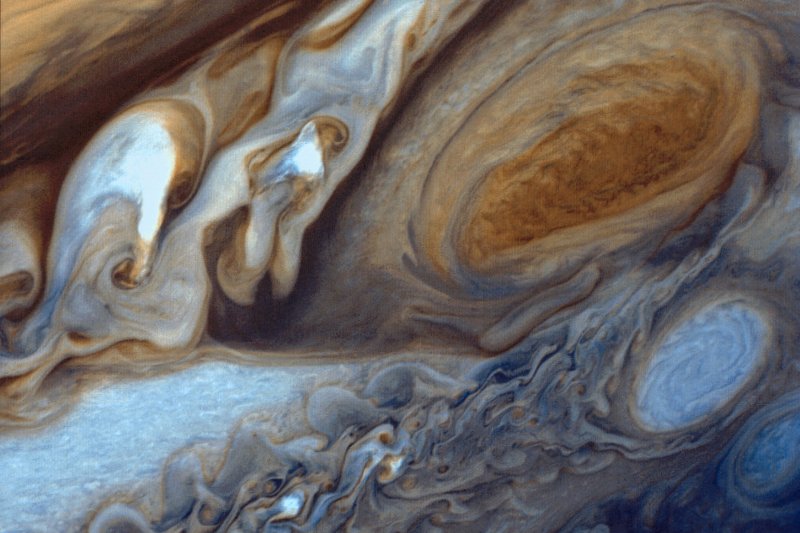New research suggests the cyclone-like storm on Jupiter known as the Great Red Spot fuels surprisingly high temperatures in the gas giant's upper atmosphere. Photo by UPI/NASA |
License Photo
BOSTON, July 27 (UPI) -- Jupiter's upper atmosphere is significantly hotter than can be explained by solar radiation alone. New research suggests the gas giant's Great Red Spot is responsible for the high temperatures.
Jupiter is fifth planet from the sun, which means it absorbs much less of the sun's energy. Yet, its upper atmosphere boasts temperatures nearly as hot as those found on Earth -- even at altitudes 250 miles from Jupiter's surface.
Researchers have known about the temperature anomalies found in Jupiter's atmosphere for some time, but only recently identified the likely culprit.
"With solar heating from above ruled out, we designed observations to map the heat distribution over the entire planet in search for any temperature anomalies that might yield clues as to where the energy is coming from," James O'Donoghue, a research scientist at Boston University, said in a news release.
O'Donoghue and his colleagues quickly picked up on a correlation between elevated temperatures and the location of the Great Red Spot.
"We could see almost immediately that our maximum temperatures at high altitudes were above the Great Red Spot far below -- a weird coincidence or a major clue?" O'Donoghue said.
Great Red Spot-fueled infrared emissions were measured at elevations as high as 500 miles.
Researchers say the heat transfer from the Great Red Spot to the upper atmosphere isn't unique to Jupiter. Similar heat transfers are found on Saturn, Uranus and Neptune.
Researchers detailed their latest findings in the journal Nature.
"Energy transfer to the upper atmosphere from below has been simulated for planetary atmos-pheres, but not yet backed up by observations," O'Donoghue said. "The extremely high tempera-tures observed above the storm appear to be the 'smoking gun' of this energy transfer, indicating that planet-wide heating is a plausible explanation for the 'energy crisis.'"















